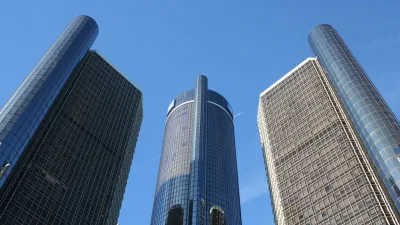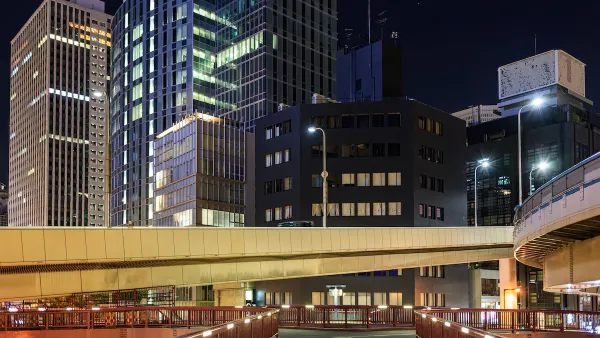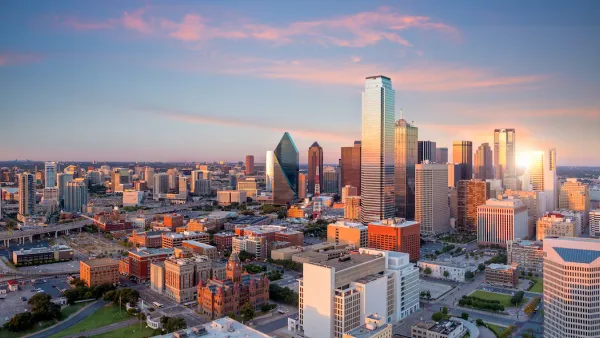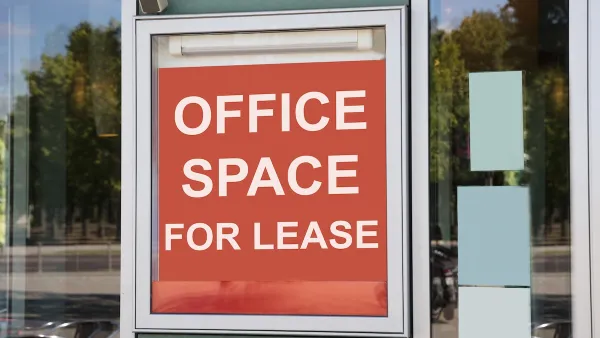Adaptive reuse is a hot concept, but regulatory and financial hurdles have made it slow to catch on in practice.

With many companies offering their employees long-term remote work and ending their leases on large urban office buildings, the future of business districts may lie in adaptive reuse, writes Henry Grabar in Slate. "Many business districts face the highest vacancy rates in decades, and a hundred million square feet of new supply from the pre-pandemic cycle is still coming online each quarter."
"There’s ample precedent for adaptive reuse as an engine of urban revitalization. Light industrial buildings in New York City’s Cast Iron Historic District (today’s SoHo) were converted into live-work lofts starting in the 1960s. The rich stock of 20th century office buildings in Chicago and Los Angeles have been converted into apartments. New England mills have been appropriated as hotels and museums."
Adaptive reuse is "one of the greenest constructions you can do," says Scott Maenpaa, a project manager at Boston-based the Architectural Team, and can be 20 to 30 percent cheaper than new construction, but conversions across the country have been relatively slow. Long-term leases, in many cases ten years or more, are creating a lag in office building vacancy, and a complicated legal landscape makes the process difficult and expensive. So far, "office owners by and large aren’t yet trying to unload their buildings at conversion-friendly prices."
"'The current controls in place make it really difficult to be able to convert from office or hotel to residential,' said Sheila Pozon, a land use lawyer at Kramer Levin." Cities like Dallas and Baltimore "did not see significant conversion of older offices until they offered sizable tax breaks," indicating that, while adaptive reuse seems "a bigger trend will require a push."
FULL STORY: Could Your Empty Office Turn Into Apartments?

National Parks Layoffs Will Cause Communities to Lose Billions
Thousands of essential park workers were laid off this week, just before the busy spring break season.

Retro-silient?: America’s First “Eco-burb,” The Woodlands Turns 50
A master-planned community north of Houston offers lessons on green infrastructure and resilient design, but falls short of its founder’s lofty affordability and walkability goals.

Delivering for America Plan Will Downgrade Mail Service in at Least 49.5 Percent of Zip Codes
Republican and Democrat lawmakers criticize the plan for its disproportionate negative impact on rural communities.

Test News Post 1
This is a summary

Test News Headline 46
Test for the image on the front page.

Balancing Bombs and Butterflies: How the National Guard Protects a Rare Species
The National Guard at Fort Indiantown Gap uses GIS technology and land management strategies to balance military training with conservation efforts, ensuring the survival of the rare eastern regal fritillary butterfly.
Urban Design for Planners 1: Software Tools
This six-course series explores essential urban design concepts using open source software and equips planners with the tools they need to participate fully in the urban design process.
Planning for Universal Design
Learn the tools for implementing Universal Design in planning regulations.
EMC Planning Group, Inc.
Planetizen
Planetizen
Mpact (formerly Rail~Volution)
Great Falls Development Authority, Inc.
HUDs Office of Policy Development and Research
NYU Wagner Graduate School of Public Service





























